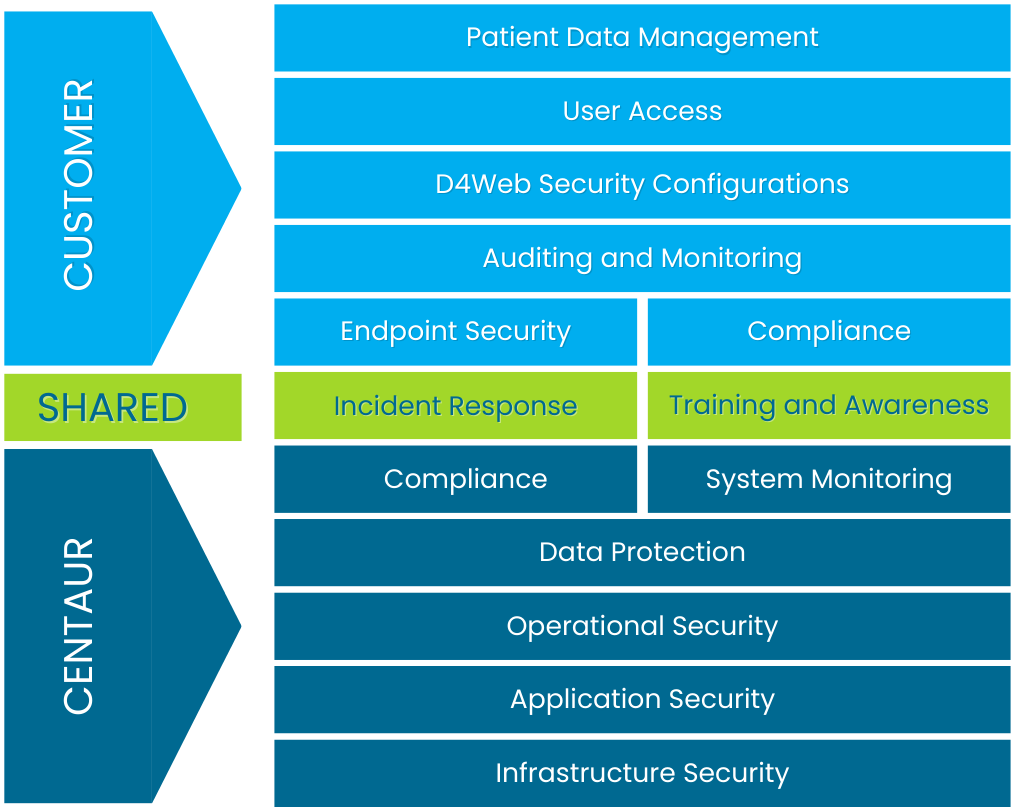Security and Compliance is a shared responsibility between Centaur Software Development and our customers. This model helps reduce the operational burden on your practice as we handle the operation, management, and control of the application components, including data protection, backup systems, and the underlying infrastructure of our cloud environments.
You are responsible for managing your use of Dental4Web, including user management, data input, protection of patient information, and adherence to applicable privacy laws and regulations. This division of responsibilities allows for flexibility and control, enabling you to use Dental4Web effectively and securely within your practice’s IT environment while maintaining the confidentiality and integrity of your patient data.


Learn more about our security focus on our Security Information Page.

Review our Privacy Policy to understand how we handle your data.

Access our online Knowledge Base for support articles and FAQs.
For any queries or assistance, please get in touch with our Support team.
Phone. Call us at 1300 855 966
Email. Send an email to support@centaursoftware.com
By clearly defining these responsibilities and working together, we aim to create a secure and compliant environment for managing dental practice information and delivering the highest standards of service to our customers.
If you have any questions or need assistance with your responsibilities within the Shared Responsibility Model, please reach out to our team. We’re here to help you maintain a secure and efficient dental practice.